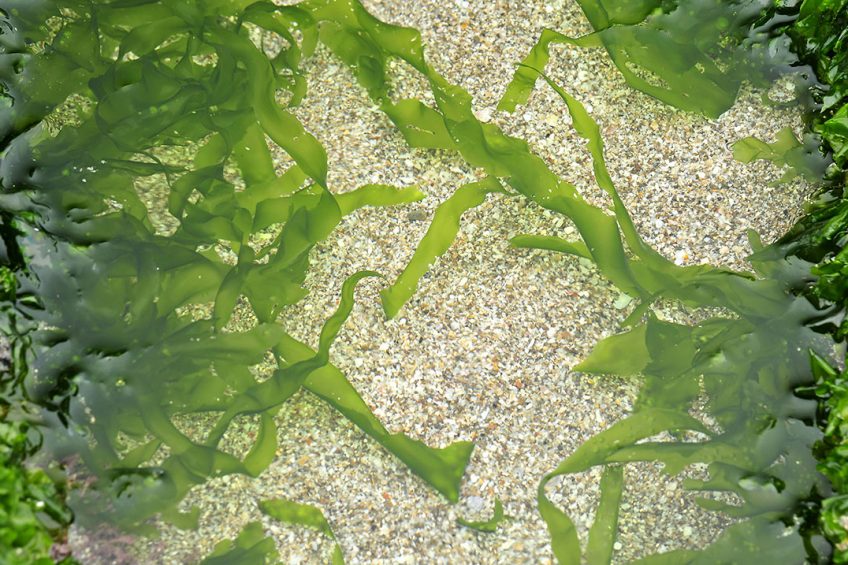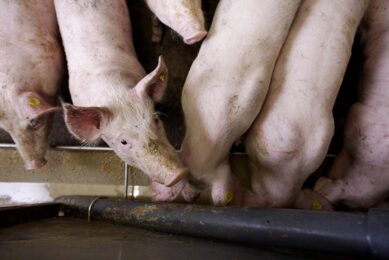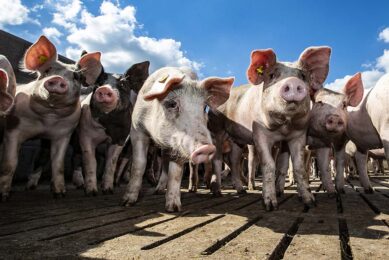More precision feeding with digestibility enhancers

Precision feeding emerged 30 years ago and has gained high-level interest since then. These days, precision feeding meets sustainability interests and both concepts find synergies in balancing environmental, economic and social interests of the livestock industry. In this context, algae-clay based technology to improve efficacy of digestive enzymes is promising.
Precision feeding can be defined as:
‘the development and implementation of feeding techniques that provide the right amount of feed, at the right quality, to each animal or group of animals, each day, depending on their own individual needs and variability’.
Over the years, the level of precision has increased thanks to a better comprehension of pig physiological needs, but also with the development of analytical and modelling tools.
In a 2001 publication, scientists Theo van Kempen and Eric van Heugten of North Carolina State University described new recommendations and innovations for precision nutrition. They stressed the need for formulating feed on ‘available nutrient’ basis, rather than gross nutrient content. They also recommended analysing each batch of ingredients reaching the feed mill using more accurate analytical technologies like infrared spectroscopy. They suggested integrating ‘price of interest’ of raw materials in formulation software, to formulate on economic interest and not only nutritional interest. The implementation of split sex feeding and phase feeding was also at the heart of their message.
In 1998, Dean Koehler of Agri-Nutrition Services showed that savings of US$ 0.06 to US$ 1.14 were made on diet cost per pig for each additional feeding phase implemented on grow-finish pigs (from 2 to 12 phases).
Routine work of pig nutritionists
20 years later, the recommendations of Mr van Kempen and Mr van Heugten are part of the routine work of pig nutritionists and producers worldwide, illustrating how much precision feeding has driven innovation in animal nutrition.
Raw materials reaching feed mills are all analysed for nutritional content (not only protein), most often using near-infrared spectroscopy (NIR) technology. Feeds are formulated on a net energy basis, which is much closer to the final use of energy than digestible or metabolisable energy, which tend to underestimate energy values of fat and starch rich ingredients, and overestimate energy values of protein rich ingredients. The standard grow-finish pig feed has been replaced by a minimum of 3 feeding phases, along with the evolution of farm equipment to meet these advancements. The evaluation of animal nutrient requirements has also improved, all leading to much more efficient performance in pig farms.
Precision pig feeding – ‘a breakthrough toward sustainability’
Meanwhile, room for improvement remains important with knowledge constantly improving on pig dietary metabolism and the rapid development of new technologies for real-time measurements. In a 2019 publication, Candido Pomar and Aline Remus of Agriculture and Agri-Food Canada, talk about precision pig feeding as ‘a breakthrough toward sustainability’ and review recent and upcoming innovations that contribute to improve precision nutrition and sustainability of farming systems.
In 2012, Luciano Hauschild and others of São Paulo State University introduced a model capable of estimating daily optimal lysine concentration for a pig (Figure 1). The model records pig weight and feed intake every day and uses it to estimate the expected feed intake and growth for the next day, from which it provides a lysine concentration recommendation for the feed.
Figure 1 – Diagram of the automatic precision feeding system operation predicting individual SID lysine requirements.

When challenged in 2 validation trials by Ines Andretta and others, again from Agriculture and Agri-Food Canada, in 2014 and 2016, this model led to reduce total lysine supply by 27% without impacting growth performance of the pigs. Further steps of development of this model will include variation of the pigs in amino acid efficiency (genetically and individually) as well as requirements for other amino acids. Candido Pomar and Aline Remus, of the 2019 publication, estimated that this further precision feeding model improvement can lead to 60% lower nutrient excretion in the future.
Digestibility enhancers
Along with all these developments, digestibility enhancers supplemented in swine feed have been used increasingly in the past 20 years, to further improve feed efficiency and limit nutrient waste. Among them, exogenous enzymes can be used to neutralise anti-nutritional factors or to digest substrates that cannot be hydrolysed by endogenous enzymes.
Such products have allowed huge improvements in diet utilisation, the most relevant example being phytase and phosphorus. Other products aim at increasing the digestibility of all nutrients in the diet. This is the case of an innovative algae-clay based product, MFeed+, which patented technology allows for stabilisation and activation of all digestive enzymes along the digestive tract.
In a digestibility study conducted by the French National Institute for Agricultural Research (INRA) in 2014, on growing pigs fed diets formulated with wheat, barley, corn and soybean meal as main raw materials, the algae-clay based product increased the ileal digestibility of energy by 3.4%, lysine by 3.6% and threonine by 5.3%.
More recently tested in a commercial research barn in the US (New Horizon Farm, under the supervision of Kansas State University), the product confirmed its interest in improving feed efficiency of finishing pigs. Pigs of 50.7kg average body weight were placed in 22 pens of 27 pigs each, blocked by body weight and arranged in 2 treatments:
- Control group, fed with commercial diets; and
- Group fed the same diets supplemented with the algae-
clay based product.
They received 3 different diets over the 3-month trial, all corn-soybean based, formulated to meet PIC 2016 requirements.
Results of the study showed a global increase in performance in the algae-clay group, compared to the control group. The growth rate was improved by 2% (P≤0.05), with the greatest effect observed in the finishing phase (+3%, P≤0.001). The use of the algae-clay based strategy tended to decrease the overall feed conversion ratio (-1%/ -3pt, P=0.19), with a significant effect in the finishing phase (-6pt, P≤0.05) (see also Figure 2).
Supplementation of the algae-clay product did not impact the feed cost per kg of gain and increased the revenue by 2%, leading to a higher income over feed cost (+US$ 0.75/pig).
Perspectives with precision feeding for pigs
Precision nutrition has gained increasing interest in the past 20 years and has brought tremendous improvements in terms of feed efficiency and environmental impact. With the ever-increasing understanding of pig physiological needs and individual variability, together with new technology development for accurate and real-time monitoring of pig performance on farm, there is a bright future and exciting perspectives with precision feeding in the pig industry. Feed efficiency will continue to be improved using digestibility enhancers, which help reduce nutrient losses.











